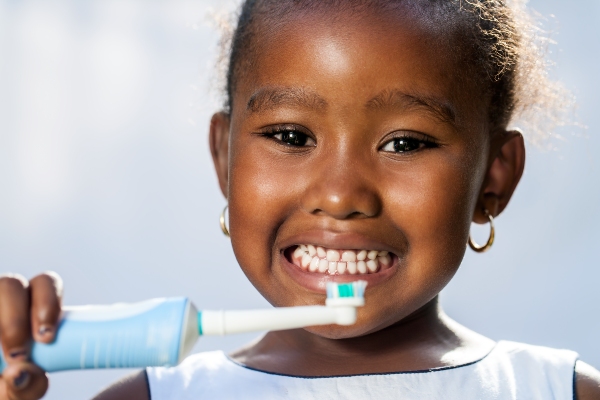 Your dentist may suggest fluoride treatment at the office once your child gets teeth to protect against cavities. Your child's general health will benefit from having healthy gums and teeth. That is why, even before your kid gets their first tooth, the dentist will start talking to you about the importance of establishing healthy oral practices like fluoride treatment. This treatment can be between two to four times per year. Your child's risk of developing cavities will determine how frequent these treatments are.
Your dentist may suggest fluoride treatment at the office once your child gets teeth to protect against cavities. Your child's general health will benefit from having healthy gums and teeth. That is why, even before your kid gets their first tooth, the dentist will start talking to you about the importance of establishing healthy oral practices like fluoride treatment. This treatment can be between two to four times per year. Your child's risk of developing cavities will determine how frequent these treatments are.
The need for fluoride treatment
The American Academy of Pediatrics (AAP) recommends that children start seeing the dentist six months after their first tooth erupts or around their first birthday, whichever comes first. During one of these visits, the dentist may recommend getting fluoride treatment.
Fluoride treatment can help delay the decay onset or halt its progression. Fluoride, a mineral that helps fortify dental enamel, is the central element in fluoride varnish. Remember that fluoride varnish treatments are not foolproof to avoid tooth decay. However, when used with proper brushing techniques, frequent flossing, professional dental cleanings, and a balanced diet, fluoride treatments may prevent tooth decay in children.
How safe is fluoride treatment?
Fluoride treatment can prevent children's dental decay and is offered by dentists across the globe. The procedure requires only a small quantity of fluoride, and hardly any is ingested. The fluoride is easy to apply and sets rock solid in seconds. Children can brush their teeth from four to 12 hours after treatment. The teeth might seem yellow after using some types of fluoride varnish. After the fluoride varnish is brushed off, the child's teeth will revert to their natural color.
The process of applying fluoride
Using a tiny brush, the dentist will apply the fluoride varnish to the chewing surfaces of each tooth. The material is sticky, yet it becomes problematic when exposed to saliva. If the youngster tries to lick off the varnish, they will feel the texture of the varnish on their tongue but will not be able to remove it. The application of varnish does not cause any pain. However, young children may still be anxious before and during the process. Fortunately, applying the varnish using a paintbrush takes little time, and our team will make every effort to put your child at ease.
Because of its proven effectiveness, fluoride is often added to public water supplies as a preventive measure to benefit public health. However, fluoride dentist treatments are much more practical for dental health. Fluoride therapy may halt and even reverse tooth decay as a preventive strategy. In addition, fluoride varnish eliminates cavity-causing germs from the mouth and strengthens the teeth. Dentists recommend treatment with fluoride at least twice a year, preferably four times.
Things to consider after fluoride treatment
After applying fluoride varnish, the child may resume normal eating and drinking. However, parents should only feed the child soft, cold, or warm (not hot) meals and beverages. It is advisable to wait at least 4 to 6 hours before brushing or flossing the teeth. Some dentists may recommend waiting until the following day.
In conclusion
By the age of six months, the American Academy of Pediatrics recommends that all babies have an evaluation of potential dangers to their dental health. It is recommended that infants at increased risk of early dental caries visit the dentist no later than 12 months or six months after the first tooth emerges, whichever occurs first. During one of your dental checkups, the dentist will check the child and determine if fluoride treatment is necessary.
Request an appointment or call Grand Parkway Pediatric Dental at 832-579-0960 for an appointment in our Richmond office.
Recent Posts
Visiting a pediatric dentistry office with your child ensures his or her future relationship with oral hygiene and dentists, in general. Whenever your child suffers from oral injuries, consider making an appointment with your pediatric dentist to uncover any underlying problems. For instance, injuries to the tongue and teeth could indicate a deeper jaw or…
Fluoridated water is part of pediatric dentistry. It is a convenient and easy way to strengthen and protect teeth at an early age. Many areas have fluoridated water, which is a definite advantage. If you want to know why a dentist will likely recommend fluoridated water, here are the details.Studies show that almost all sources…
Nutrition is an important part of pediatric dentistry. Having balanced amounts of vitamins and minerals can strengthen and protect the teeth. Proper nutrients also fuel dental function. If you want to know how important nutrition is for your child’s oral health, here are the details from a pediatric dentistry professional.Children are still developing. They need…


